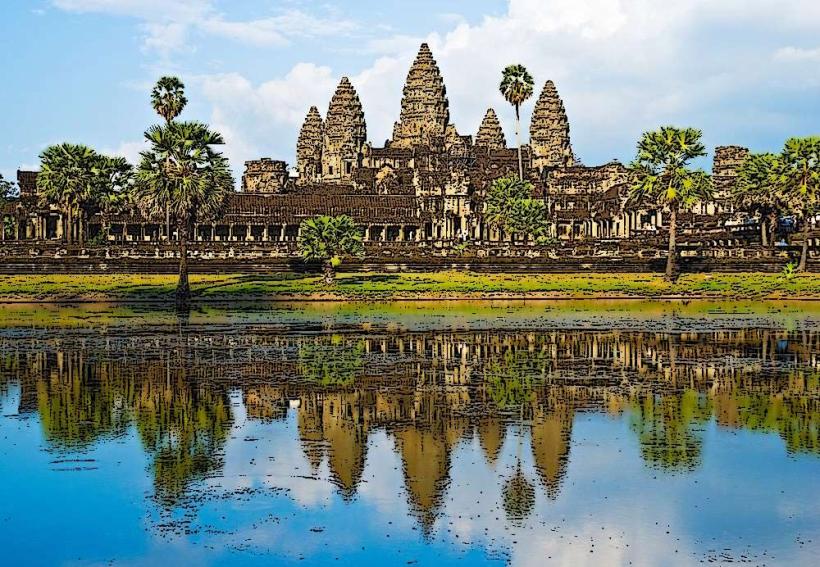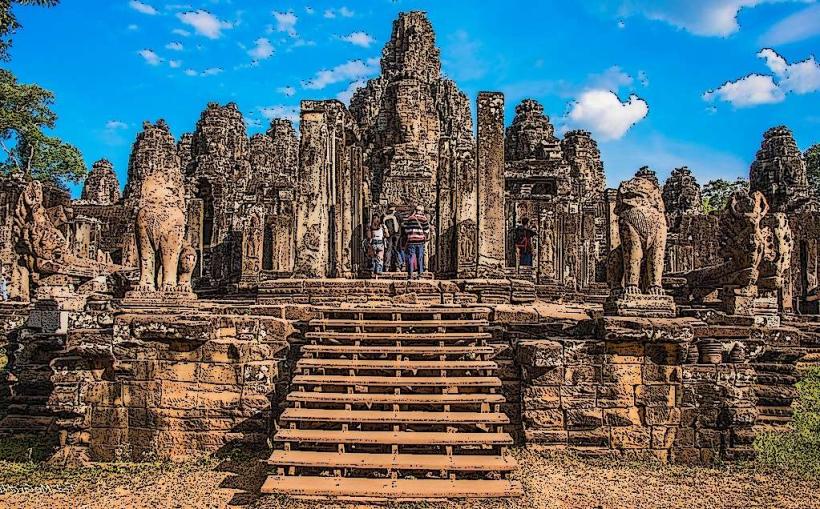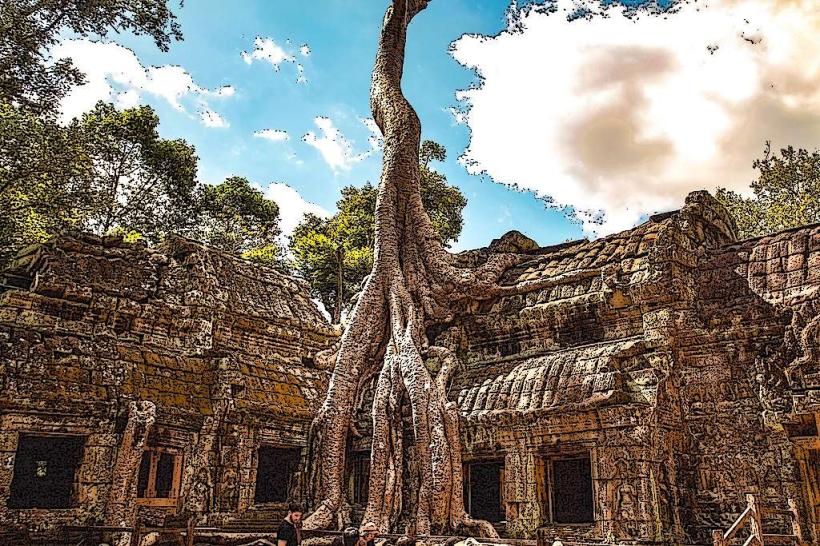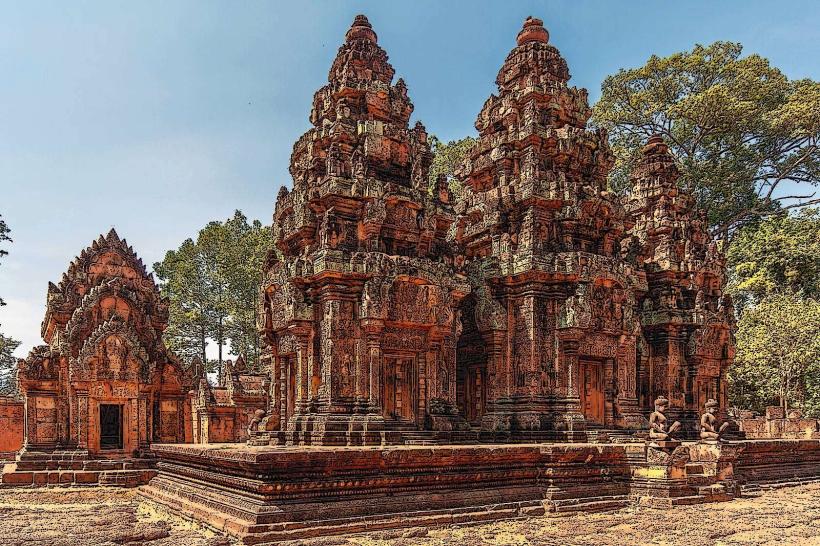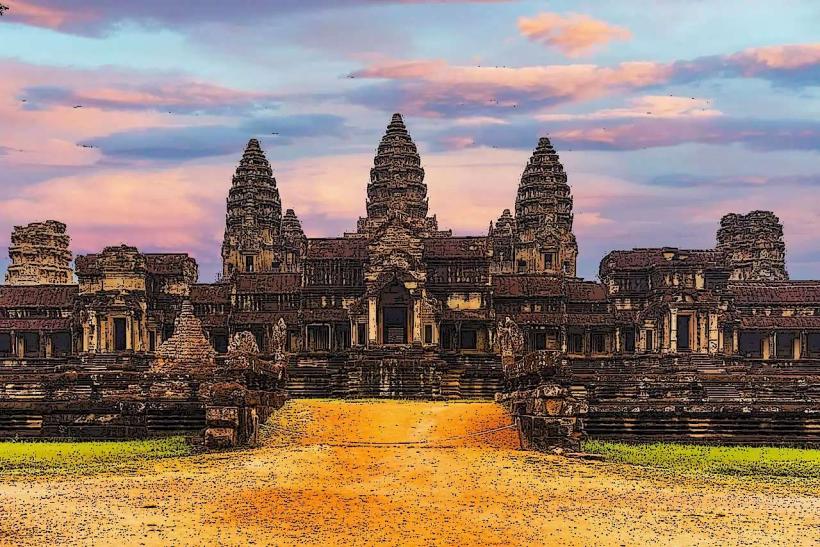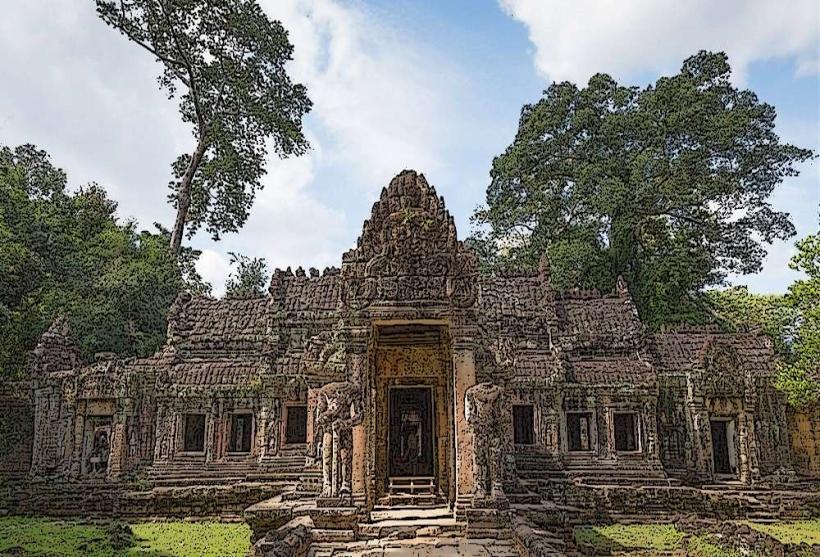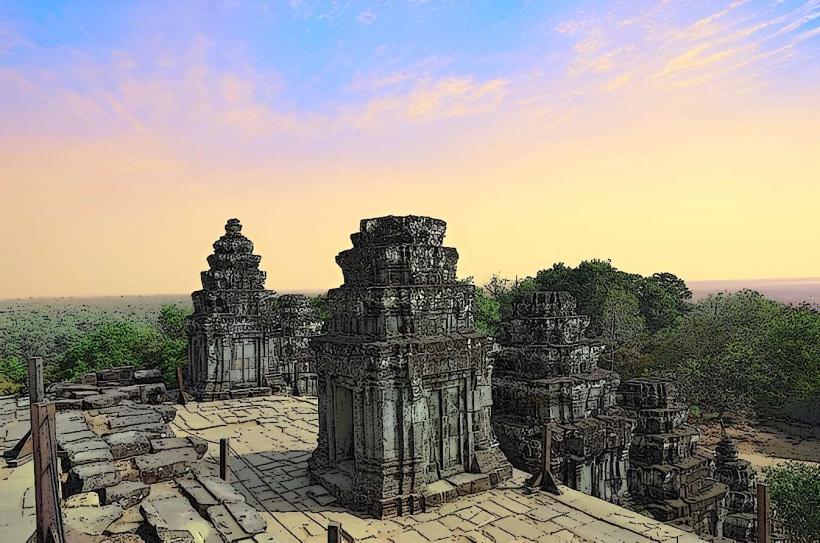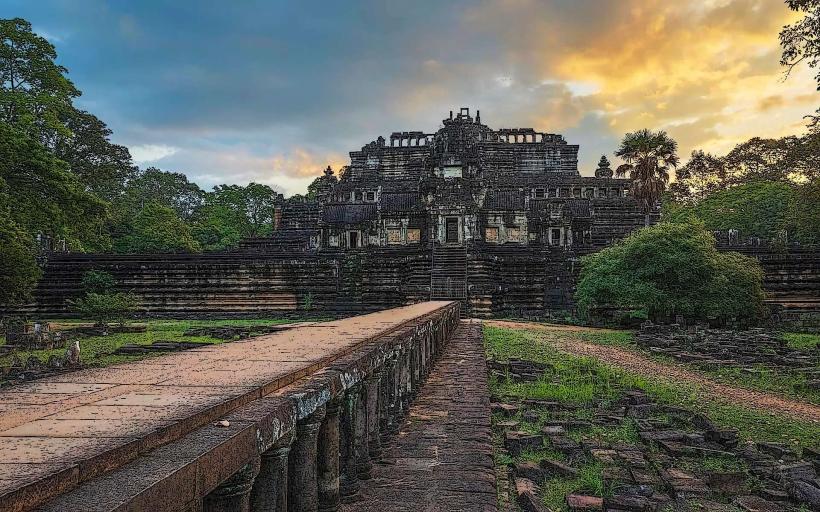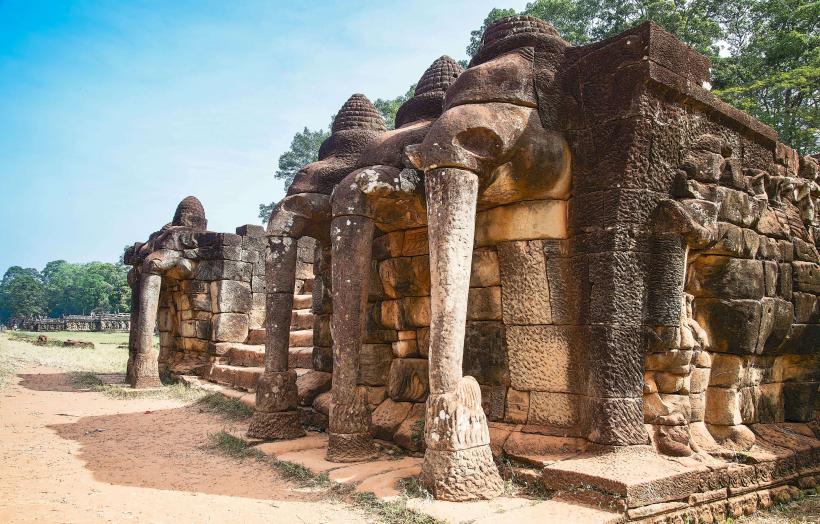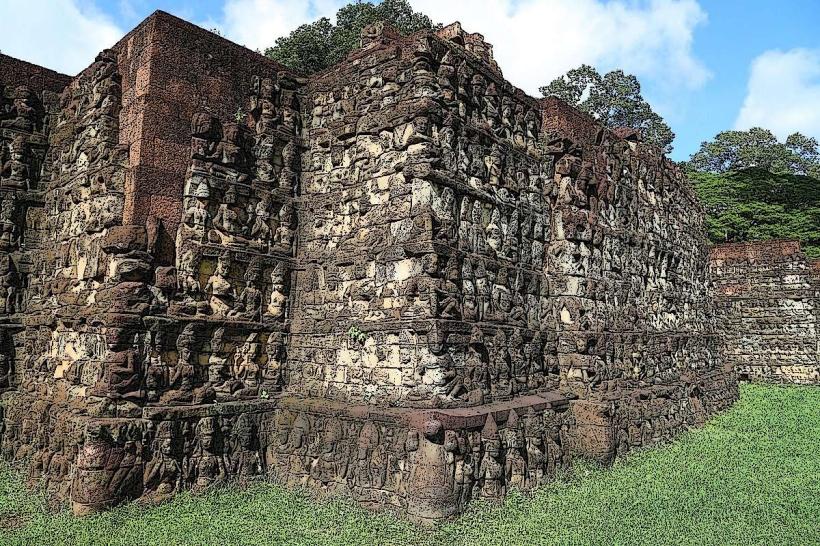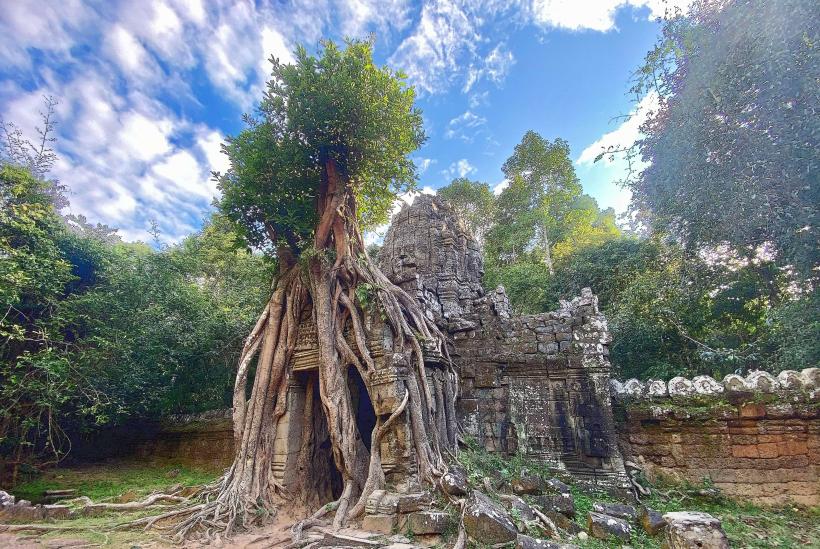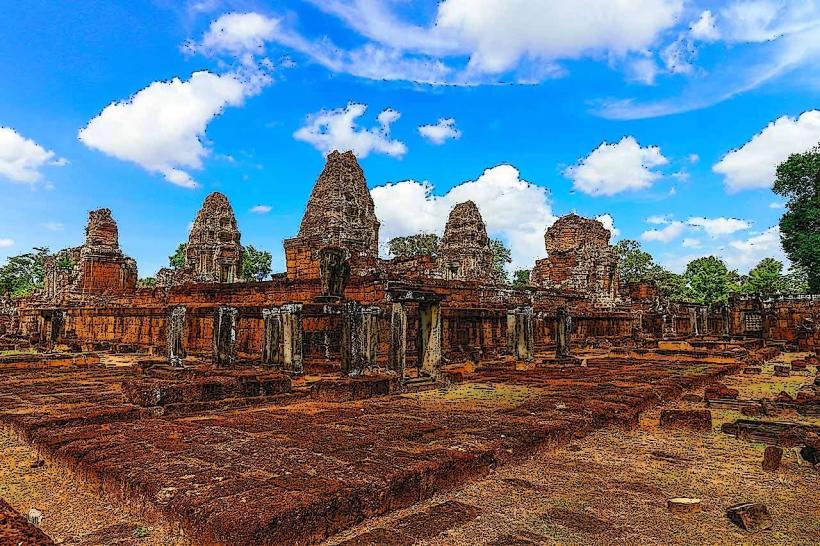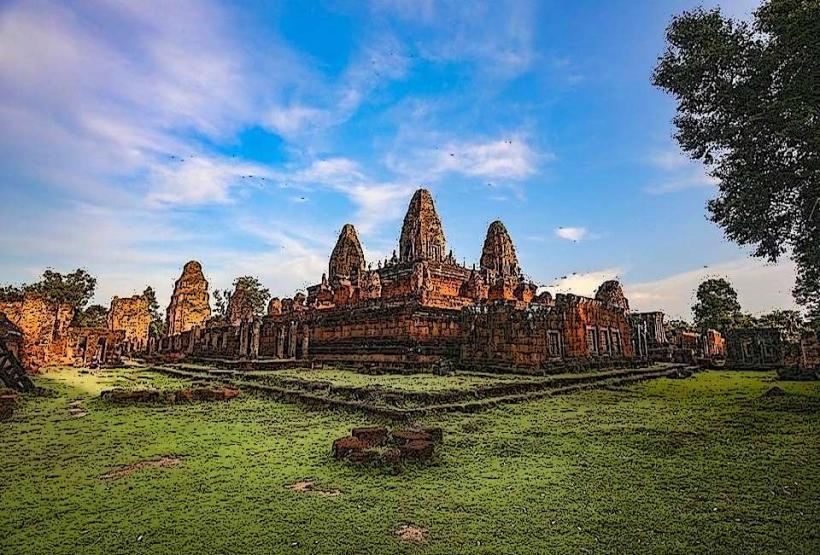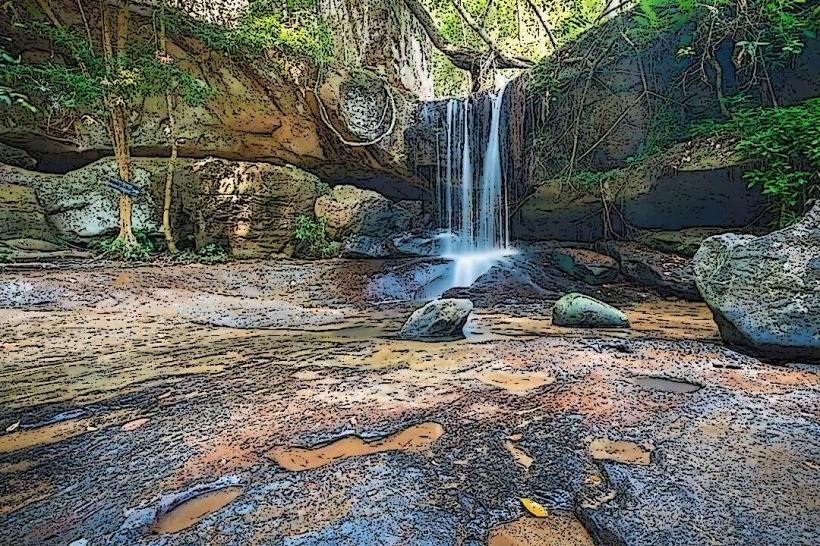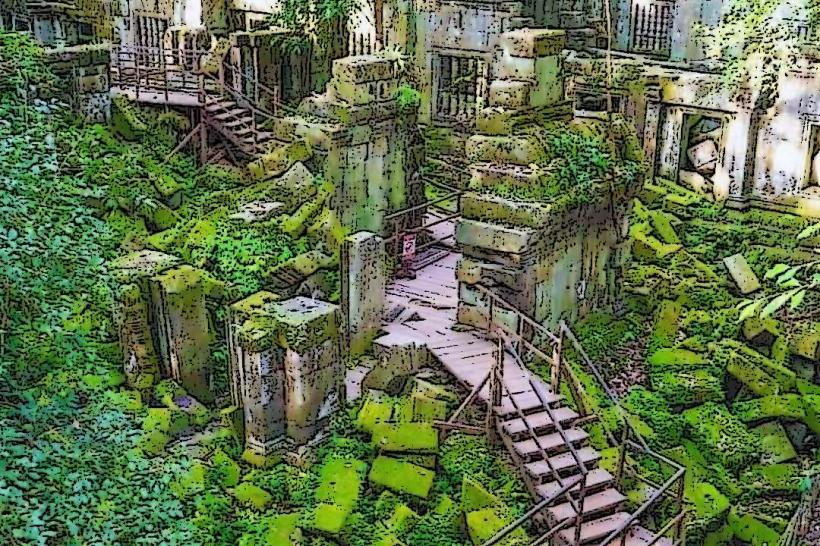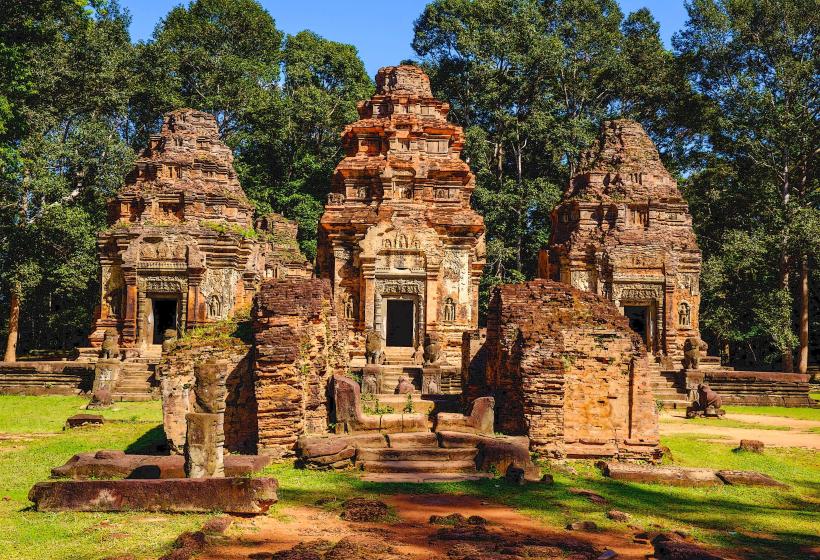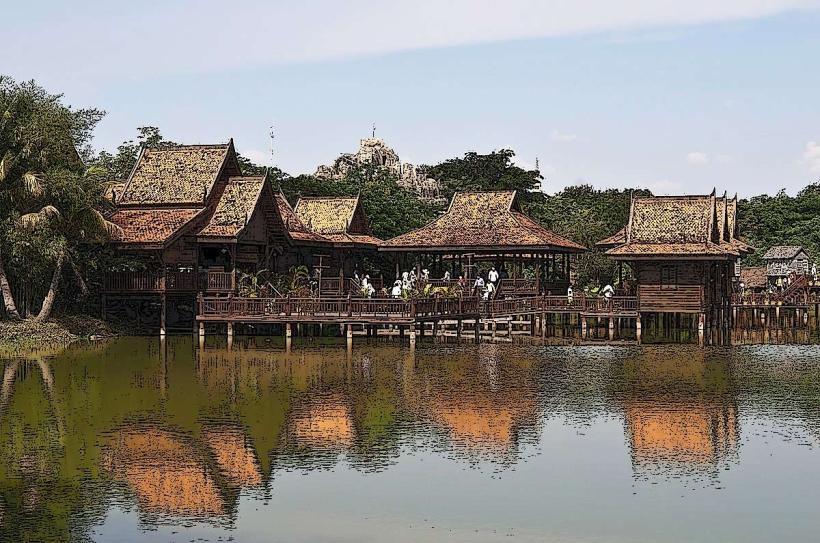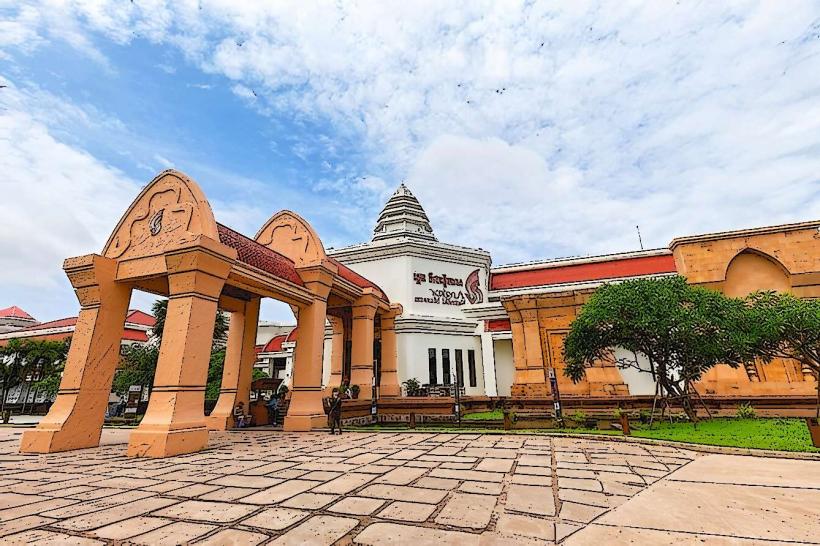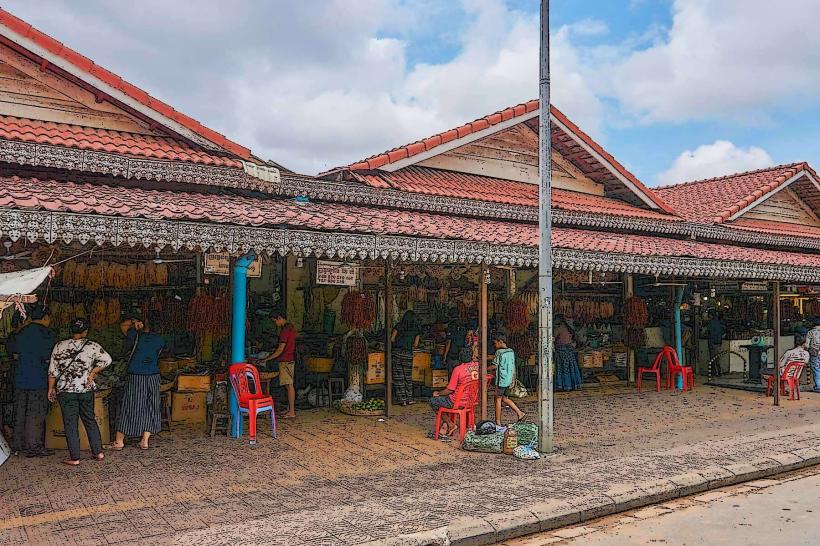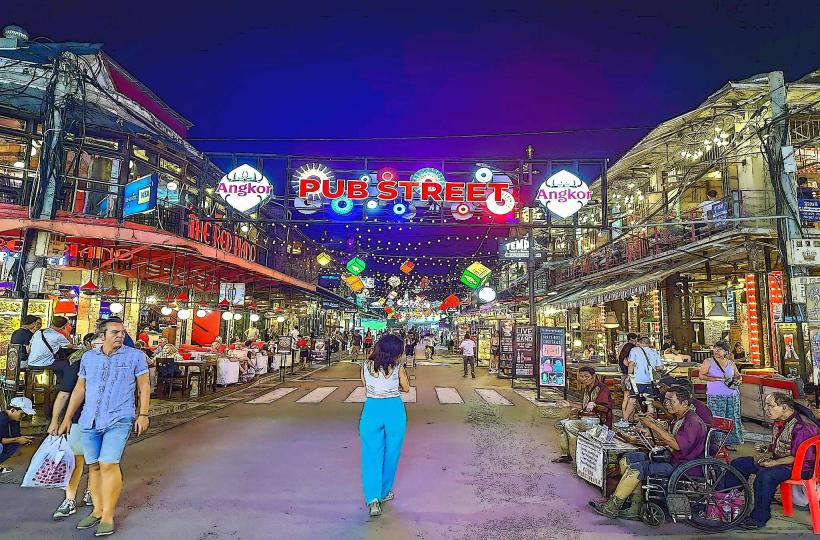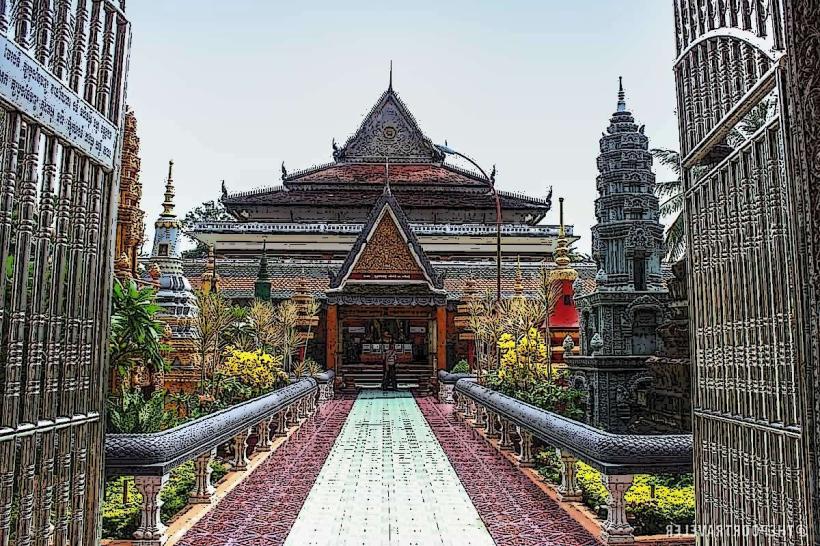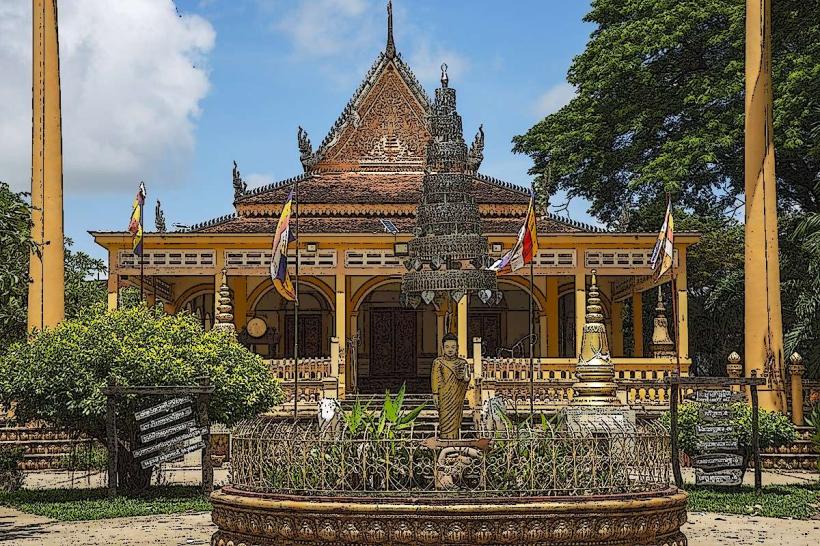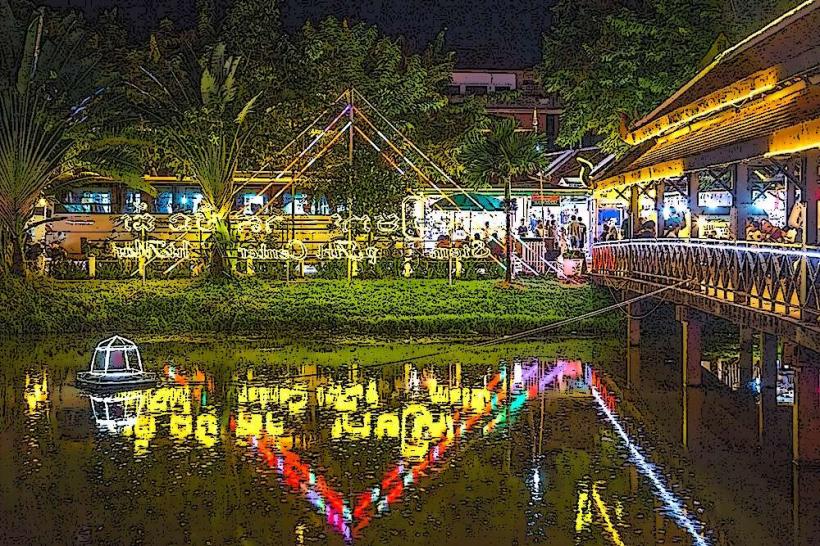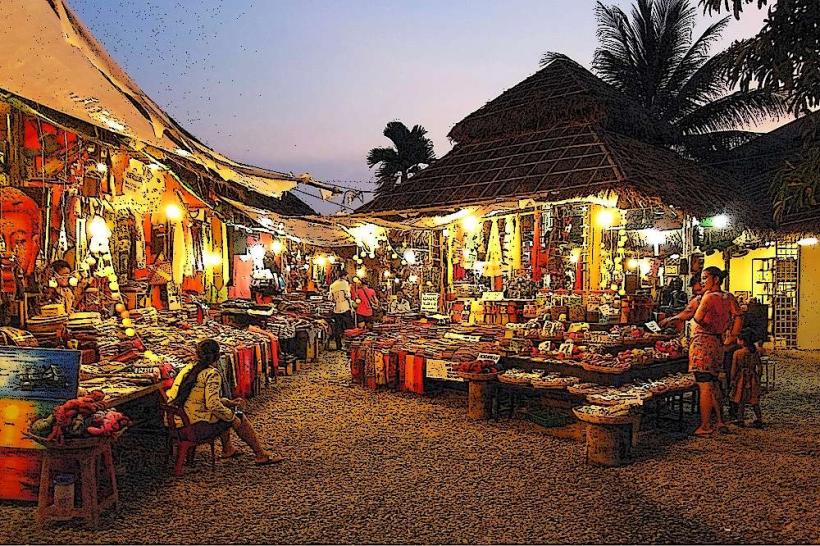Information
Landmark: Neak PeanCity: Siem Reap
Country: Cambodia
Continent: Asia
Neak Pean – The Sacred Water Temple of Angkor
Neak Pean is a small but unique temple located in the Angkor Archaeological Park, distinguished by its striking location and water-based design. Built in the late 12th century by King Jayavarman VII, Neak Pean is one of the most fascinating water temples in the Angkor complex, known for its ponds, central altar, and symbolic representations.
Its name, Neak Pean, translates to "The entwined Naga", referring to the serpent imagery found within the temple. The temple’s central feature is its circular pond, which once served as a ritual bathing site and is associated with the healing powers of water.
History of Neak Pean
- Built during the reign of King Jayavarman VII (1181–1218 AD) as part of his large-scale construction projects dedicated to Buddhism.
- Neak Pean is believed to have been a symbolic representation of a mythical lake and a healing temple, associated with the king's desire to provide healing to his people and empire.
- The temple is often linked to Jayavarman VII's association with Buddhist ideals and his effort to link the spirituality of water with health and purification.
- Neak Pean is one of several temples built during this period near the Srah Srang reservoir, which could have been used for ritual bathing and spiritual purification.
Architectural Features of Neak Pean
1. Central Pond and Water Channels
- The temple is built on an artificial island surrounded by a circular pond, with four other smaller ponds at its corners.
- The central pond is surrounded by a stone platform with a central altar at the heart of the structure.
- Water used to flow through the channels and small basins, symbolizing the flow of life and purification.
- The temple was likely constructed in the form of a symbolic cosmic lake, reflecting the connection between earth, water, and the divine.
2. The Entwined Naga Statue
- The name Neak Pean (meaning "entwined Naga") refers to a serpent (Naga) statue located at the center of the central pond.
- A large Naga figure once stood at the center, with two intertwined serpents curling around a central lotus flower.
- The Naga is a symbol of water and fertility in Hindu and Buddhist beliefs, representing life’s renewal and transformation.
3. The Surrounding Four Smaller Ponds
- The temple is encircled by four smaller square ponds, symbolizing the four great rivers of the Hindu universe, such as the Ganges, Yamuna, Sarasvati, and Godavari.
- These smaller ponds are connected to the central pond via stone channels, representing the flow of water that connects the earth and heavens.
4. Bas-Reliefs and Carvings
- The walls of Neak Pean feature carvings of divine figures, such as Apsaras, and other Hindu deities.
- The artwork reflects the temple's spiritual significance, illustrating themes of water’s purifying power and the divine connection between humans and gods.
Symbolism of Neak Pean
- Healing Powers of Water: Neak Pean is believed to have been a healing temple, where people could come to bathe in the sacred waters for physical and spiritual healing.
- Cosmic Balance: The temple’s design, with its central pond and surrounding water channels, represents a cosmic balance between water, earth, and the divine, symbolizing the interconnectedness of all life.
- Mythical Significance: The entwined Naga at the temple’s heart is a powerful symbol of fertility, water, and life, often connected with Hindu and Buddhist cosmology.
Visiting Neak Pean
1. Best Time to Visit
- Early morning or late afternoon is the best time to visit to avoid the midday heat and crowds.
- The light is soft, making it ideal for photography, especially when capturing the reflecting water and the Naga statues.
2. Getting There
- Neak Pean is located near Srah Srang, approximately 35 km from Siem Reap.
- It is part of the Grand Circuit in Angkor and can be easily accessed by tuk-tuk, bicycle, or private car.
- You can combine a visit to Neak Pean with nearby temples, such as Ta Som and Preah Khan.
3. What to Expect
- A peaceful, serene atmosphere away from the more crowded temples in Angkor.
- A small but visually striking temple, surrounded by reflecting water and symbolic carvings.
- Nature’s presence, as the temple sits in the midst of lush greenery and water.
Conclusion
Neak Pean is a tranquil, unique water temple in Angkor that offers visitors a glimpse into the spiritual significance of water in Khmer religious beliefs. The temple’s symbolic design, entwined Naga carvings, and peaceful surroundings make it a must-see destination for those exploring the Angkor complex.

